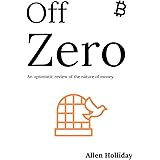Navigating the US Debt Crisis: Why Strategic Bitcoin Investments in 2025 are Paramount
As the accompanying video meticulously details, the global financial landscape is undergoing a profound transformation. A critical juncture approaches, defined by an unprecedented US national debt and a substantial $7.2 trillion currently parked in money market funds. This presents a looming systemic risk, compelling astute investors to re-evaluate traditional asset allocation strategies. Consequently, understanding the macro forces at play—and positioning oneself ahead of the curve—becomes essential for safeguarding and expanding wealth.
The prevailing sentiment suggests that these money market funds offer a risk-free haven, delivering attractive interest rates. However, this perception masks a deep-seated vulnerability within the US debt system, a “ticking time bomb” that portends one of the most significant wealth transfers of our generation. Identifying this structural fragility early can allow savvy investors to front-run the impending economic shifts, transforming potential financial instability into a generational opportunity, particularly through strategic allocations to digital assets like Bitcoin in 2025.
The Inexorable Rise of US Debt and Political Inertia
The United States faces an addiction to overspending, a fiscal profligacy that appears impossible to curb, regardless of political affiliation. Even influential figures like Elon Musk and Donald Trump, despite their formidable power and intent, have demonstrated an inability to meaningfully reduce the US deficit. The political will simply does not exist on either side of the aisle to implement the necessary austerity measures or cost controls. This collective inaction underscores a fundamental breakdown in governmental fiscal responsibility, ensuring that the trajectory of increasing debt will persist until a systemic failure forces a reckoning.
This absence of political will is particularly concerning when considering the recent “big beautiful spending bill” backed by Republicans, which, paradoxically, represents a significant extension of this unchecked spending. As billionaire investor Chamath Palihapitiya aptly describes, this policy is the “anti-doge”—the antithesis of any meaningful desire for governmental reform or fiscal discipline. Therefore, the reality of a perpetually expanding national debt is no longer a speculative concern but a solidified certainty for the foreseeable future, pushing the traditional financial system towards an inevitable breaking point.
The Federal Reserve’s Predictable Playbook: Rate Cuts and Inflation
A central pillar of this impending financial shift lies in the Federal Reserve’s historical interest rate cycles, which exhibit a remarkably consistent pattern. Since 2000, we have observed a two to three-year period of rate hikes, followed by a rapid, often precipitous, drop to near zero. For example, rates rose from June 2004 to 2006, then plummeted to zero by 2008. Similarly, a cycle from 2016 to 2019 ended with a swift descent to zero. The current cycle, initiated in 2022 and leveling off in 2023, is now poised for its inevitable “drop off to zero.”
This cyclical behavior is not arbitrary; it is a direct response to the unsustainable burden of servicing the national debt at high interest rates. The US government simply cannot afford to maintain elevated long-term rates without severely straining its budget. Consequently, the Federal Reserve will be compelled to cut rates, effectively accepting a higher rate of inflation as a necessary byproduct. This policy shift, often accompanied by quantitative easing where the Fed purchases its own debt, will devalue the dollar and erode the purchasing power of cash, including the vast sums currently held in money market funds. The consequence: these trillions will seek out new homes offering higher yield and upside potential, driving capital into alternative asset classes.
Bitcoin: The Dual-Role Asset in a Volatile Economy
In this turbulent macroeconomic environment, Bitcoin distinguishes itself through its unique dual functionality: acting as both a robust risk-off hedge and a high-beta risk-on growth asset. When traditional markets perceive heightened risk, Bitcoin behaves like “gold on steroids,” offering a perceived safe haven from inflation and currency debasement. Conversely, during periods of market exuberance, it functions as “NASDAQ on steroids,” providing amplified returns relative to conventional equities. This adaptive characteristic positions Bitcoin as an incredibly versatile investment, capable of attracting capital from diverse investor profiles.
Consider the recent trajectory: Bitcoin’s climb from $15,000 to over $112,000 occurred predominantly during a “risk-off” phase, signaling its adoption as an inflationary hedge against governmental overspending. This remarkable resilience, even amidst widespread “altcoin despair,” underscores its growing acceptance as a fundamental store of value. As more capital flows out of depreciating fiat currencies and into digital assets, this dual reputation will further solidify Bitcoin’s role, as Will Clemente suggests, becoming both the “fastest horse when risk is ripping” and a “safe haven reserve asset.”
The Institutional Onslaught: Public Companies and Bitcoin Treasuries
The narrative surrounding Bitcoin is undergoing a profound shift, moving from retail speculation to widespread institutional adoption. Publicly traded companies are increasingly recognizing Bitcoin as a superior treasury asset, emulating the pioneering strategy of MicroStrategy. Recent reports, such as Trump’s media group’s plan to raise $3 billion to acquire Bitcoin and crypto, highlight this escalating trend. Furthermore, the collaboration between Cantor Fitzgerald, USD Tether, and Jack Mallers through “21” signifies another significant player entering the market to accumulate more Bitcoin.
Moreover, the concept of a “strategic Ethereum reserve” is gaining traction, exemplified by Ethereum co-founder Joseph Lubin’s move with SharpLink Gaming to establish a $425 million reserve. These developments are not isolated incidents; they represent a burgeoning sector where corporations issue debt to acquire digital assets, aiming to capitalize on their long-term appreciation as a hedge against fiat currency devaluation. This corporate treasury strategy is set to become a massive trend, turning portions of the stock market into proxies for Bitcoin exposure and propelling Bitcoin’s price to unprecedented levels.
Navigating Potential Systemic Risks in Crypto Acquisitions
While the institutional adoption of Bitcoin is undeniably bullish for its price, it is crucial to acknowledge potential systemic risks. Some experts, like “Mippo” in the video, express concerns that certain debt-financed crypto acquisition vehicles could “end in tears.” This perspective posits a scenario reminiscent of the 2022 crypto lending collapse—involving entities like Celsius, FTX, and Grayscale Bitcoin Trust—where an over-leveraged system became vulnerable to defaults and balance sheet holes. Imagine if numerous public companies, having accumulated substantial debt to purchase Bitcoin, faced a significant and sustained downturn in Bitcoin’s value. Such an event could trigger a “debt spiral” within these entities, leading to widespread insolvencies.
However, it is also important to differentiate between strategies. Michael Saylor’s MicroStrategy, for instance, is often cited as being potentially “many steps ahead” and structurally safer due to its long-term conviction and likely more conservative debt structuring. While some new entrants might be more susceptible to volatility, the overarching trend of corporate treasury diversification into Bitcoin suggests a deeper, more fundamental shift. Investors must therefore maintain vigilance, understanding that while the market is likely to trend upwards significantly before any widespread implosion, rigorous due diligence on specific companies and their balance sheets remains paramount.
From Altcoin Despair to Renewed Opportunity
The current market phase, characterized by Bitcoin’s dominance and a palpable “altcoin despair,” is a transient phenomenon. As the $7.2 trillion flows out of money markets and the Federal Reserve eventually “slams down to zero” with interest rates, this capital will seek higher returns in risk assets. This shift will not only boost Bitcoin but also ignite a resurgence in the broader cryptocurrency market, particularly within the “good altcoins” that offer genuine innovation and utility.
The game has evolved significantly since previous cycles; with millions of new coins, discerning true value from speculative noise requires heightened precision. Yet, the continuous emergence of altcoins and meme coins achieving multi-billion dollar valuations confirms the enduring vitality of this sector. Currently, signs of reversal are emerging, with Ethereum showing resilience off its support levels on the ETH/BTC chart and persistently testing the $2,700 resistance against USD. For long-term investors, this period of consolidation and “altcoin despair” could present an ideal accumulation window, positioning them for the explosive “risk-on” phase when capital floods into the new, exciting innovations within crypto.
Strategic Bet Sizing and Long-Term Conviction
Investing in the dynamic cryptocurrency market, especially in the 2025 cycle, demands disciplined risk management, with bet sizing being a critical component. Over-sizing positions, particularly in “moon shot” altcoins, can lead to substantial losses when the market inevitably experiences its characteristic 80-90% corrections. Imagine if an investor placed an overwhelming percentage of their capital into a single, highly speculative asset; a significant downturn could decimate their portfolio. Instead, a prudent approach involves allocating the vast majority of capital to “high conviction bets” like Bitcoin and established altcoins such as Ethereum and Solana.
By maintaining diversified exposure and appropriately sizing individual bets, investors can weather volatility and capitalize on long-term trends. For instance, an allocation of 60% or more into major assets ensures that even if some smaller positions falter, the overall portfolio remains robust. While predicting individual winners with 100% accuracy is impossible, a strategy centered on calculated, long-term bets—especially knowing that the future promises significant appreciation for Bitcoin and crypto—allows investors to accumulate strategically, whether during dips or by adding to winning positions as the market ascends. The best-case scenario for accumulation might even be a “boring summer” or a “sell in May and go away” period, offering a final opportunity for investors to prayerfully seek “just one more dip” into the $95,000-$102,000 range for Bitcoin before the macro trends fully unleash their potential.







